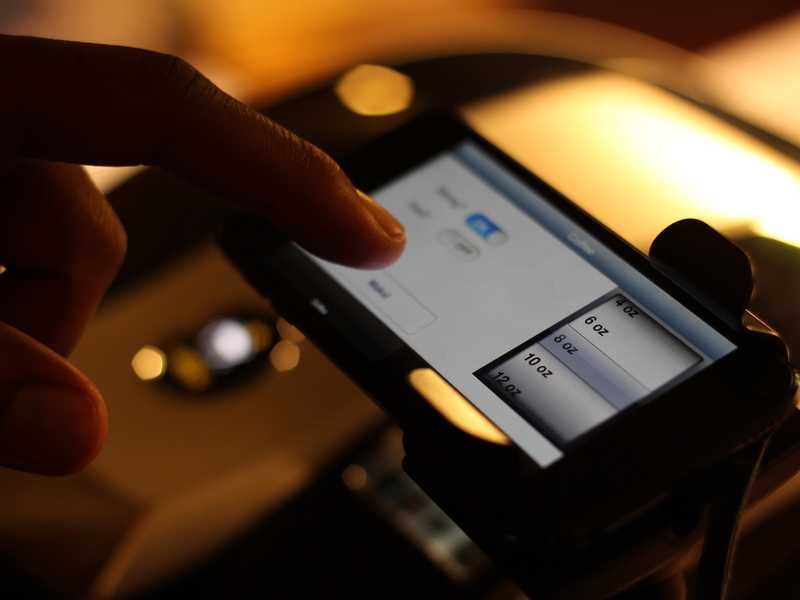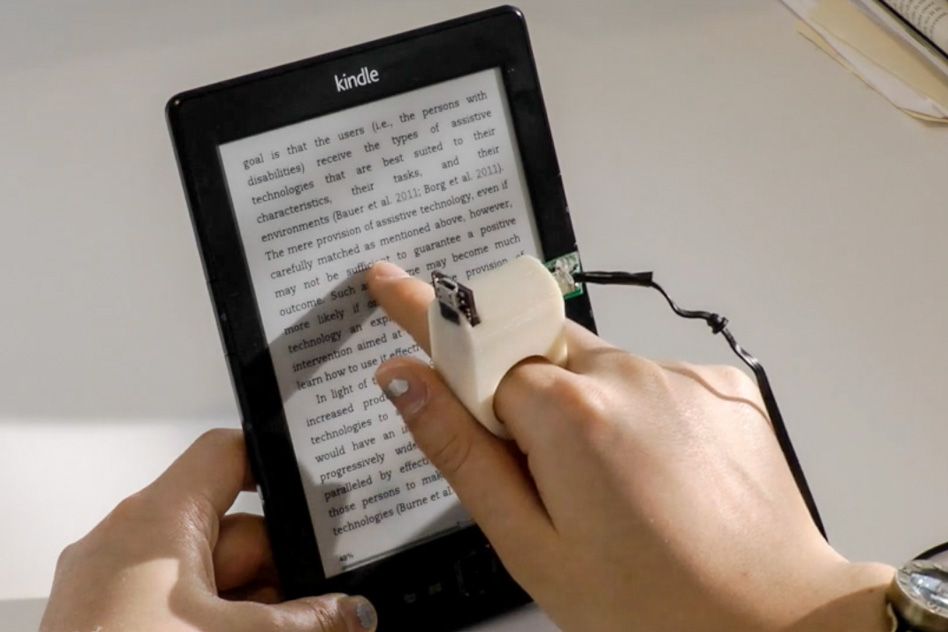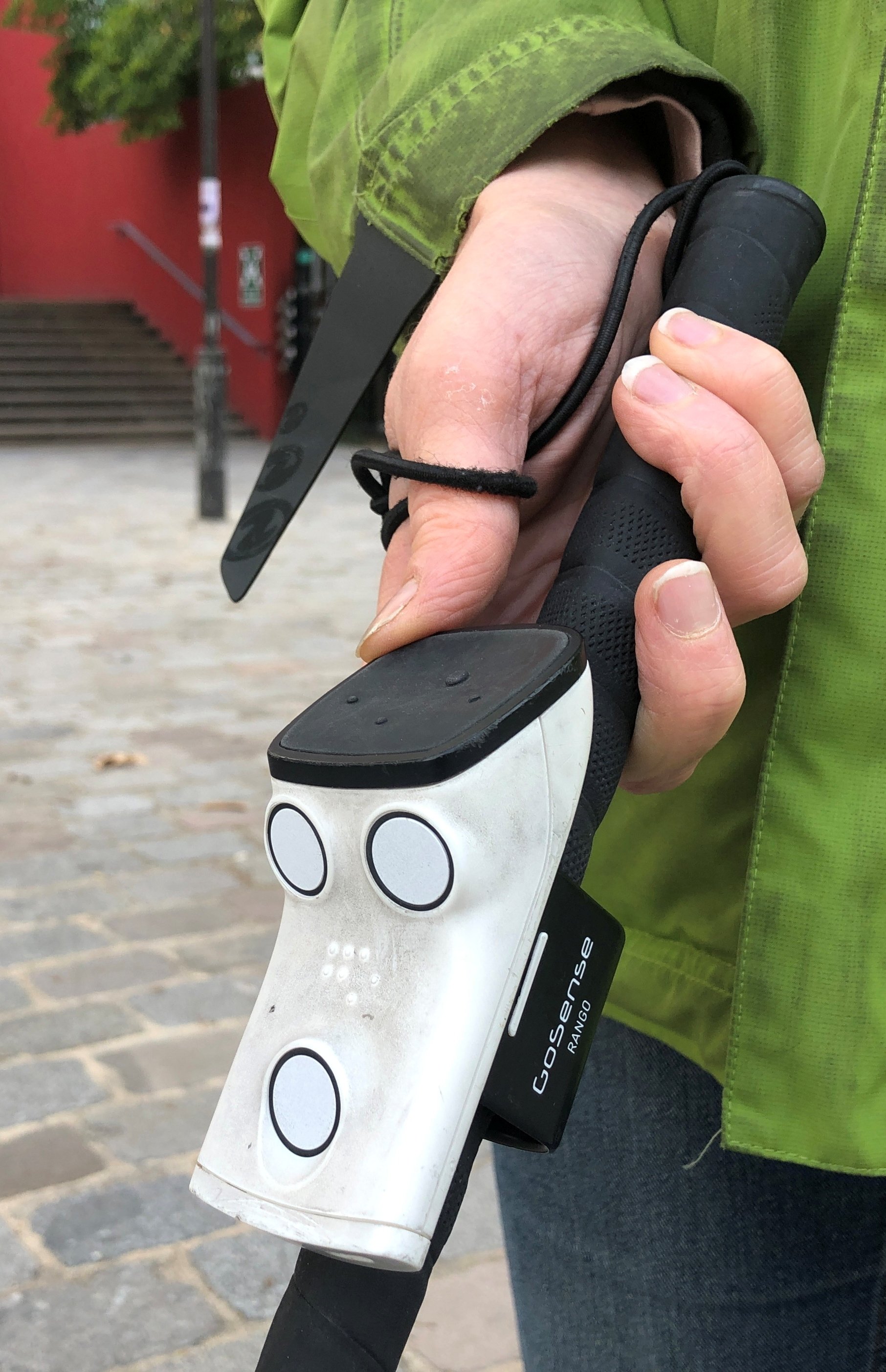OCR Devices for the Blind: Changing Print to Speech in Real-Time
OCR Devices for the Blind: Changing Print to Speech in Real-Time
Blog Article
Discover Innovative Devices Designed for the Aesthetically Impaired
The advancement of cutting-edge devices for the aesthetically damaged represents a substantial advancement in access and self-reliance. Technologies such as smart glasses with AI abilities and mobile applications made to offer auditory descriptions are reshaping everyday experiences for customers. In addition, wearable devices that employ haptic responses enhance ecological awareness, while modern-day Braille developments use new ways to involve with message. As these tools proceed to progress, their effect on the lives of those with aesthetic problems raises vital questions regarding the future of inclusivity and autonomy in different elements of life. What exists in advance in this technological landscape?
Smart Glasses for Navigating

Smart glasses designed for navigation are reinventing the way aesthetically damaged individuals interact with their setting. These innovative devices utilize a mix of camera innovation, synthetic intelligence, and auditory comments to provide real-time details about environments. By employing challenge detection systems, smart glasses can notify customers to potential hazards, allowing safer flexibility in both familiar and unknown settings.
The integration of GPS innovation better enhances navigating capabilities, allowing customers to get acoustic directions as they relocate. This hands-free approach not only promotes freedom however also empowers visually damaged individuals to browse city landscapes with raised confidence. Additionally, numerous clever glasses are geared up with features that recognize spots and street signs, supplying contextual details that boosts the user experience.
Furthermore, the growth of these tools is continually progressing, with business working to boost the accuracy of item recognition and expand the array of navigational functions. As smart glasses come to be more inexpensive and accessible, they hold the possible to significantly change every day life for aesthetically damaged users. Inevitably, these cutting-edge tools stand for a crucial step toward inclusivity, offering improved movement and a greater sense of autonomy for people browsing the world around them.

Mobile Application for Daily Living
How can mobile applications boost the daily lives of aesthetically impaired individuals? Mobile apps are changing the means visually impaired individuals navigate their atmospheres, manage daily jobs, and accessibility info. These applications supply necessary support through various capabilities, promoting self-reliance and improving quality of life.
Numerous ingenious mobile apps are designed specifically for everyday living. Apps like Be My Eyes attach visually impaired customers with sighted volunteers through video clip calls, allowing them to obtain real-time help with tasks such as checking out tags or navigating unknown areas. Seeing AI, developed by Microsoft, makes use of synthetic intelligence to explain surroundings, read message, and determine objects, efficiently changing a smart device into a powerful tool for daily help.
Additionally, navigation applications tailored for the aesthetically impaired, such as Aira and BlindSquare, supply audio-based directions and ecological details, allowing customers to traverse their surroundings safely and confidently. Past navigating and instant help, mobile apps likewise sustain organization and task administration, with features that help customers establish reminders, develop order of business, and track appointments. In summary, mobile applications function as vital resources, encouraging aesthetically impaired individuals to lead more independent and satisfying lives.
Wearable Technologies for Assistance
Empowerment with technology is progressively apparent in the realm of wearable tools created to help visually damaged people. These ingenious tools incorporate effortlessly right into daily life, enhancing navigation and offering crucial responses to individuals. For circumstances, clever glasses equipped with electronic cameras can check out and acknowledge faces message aloud, enabling customers to communicate more with confidence in professional and social settings.
One more remarkable advancement is the use of haptic feedback systems in wearable devices. These systems make use of resonances or various other responsive signals to communicate info about the customer's atmosphere, such as obstacles or modifications in surface, improving movement and safety and security. Wearable technologies additionally include wristbands that attach to smart devices, informing individuals to notices via refined vibrations, hence boosting connection without reliance on visual signs.
As these innovations continue to evolve, they are not just boosting freedom for visually damaged individuals but you could check here also fostering a higher sense of inclusion in culture. By connecting the gap in between difficulties faced in day-to-day living and the potential for autonomy, wearable innovations function as critical devices in the pursuit for equal rights and empowerment for those with visual disabilities.
Sound Description Devices
Sound summary tools play a critical duty in improving accessibility for aesthetically impaired individuals, supplying them with the capability to involve with visual media. Smart glasses for the visually impaired. These devices use narrated descriptions of crucial visual aspects in films, tv programs, and live performances, making certain that individuals can fully comprehend the context and emotions conveyed through visuals
Audio summary can be incorporated right into numerous systems, including streaming services, cinema screenings, and live cinema. Many popular streaming services currently include audio summary as an access function, enabling viewers to pick it easily. In addition to traditional media, specialized apps also exist, supplying audio descriptions for art exhibits, galleries, and various other social occasions.
The effectiveness of audio summary rests on the skill of the narrators, that must share visual information succinctly without diminishing the initial audio. Developments in this area are additionally leading the means for even more customized experiences, where customers can readjust the level of detail and pacing according to their preferences.
Braille Innovations and Instruments
Braille devices and advancements have actually dramatically transformed the means visually damaged individuals engage with text and information. Modern innovations have actually led to the advancement of versatile tools that enhance literacy and independence amongst users.
Moreover, mobile Braille notetakers integrate traditional Braille input with contemporary capabilities, assisting in note-taking, organizing, and document editing on the move. Screen readers for the blind. These small tools frequently include text-to-speech capabilities, bridging the void in between Braille and auditory info
Furthermore, innovative Braille printers have arised, allowing customers to generate Braille tags, papers, and educational products efficiently. This availability fosters better engagement in instructional and specialist atmospheres, ultimately promoting inclusivity.
In addition, study into wise Braille modern technologies remains to broaden. Devices that integrate expert system are being checked out to provide real-time navigation aid and contextual info, improving the individual experience in varied settings. On the whole, these technologies show a commitment to equipping aesthetically damaged people via technology, guaranteeing they can conveniently access pop over here and involve with the globe around them.

Conclusion
The development of innovative tools for the visually damaged significantly boosts independence and top quality of life. These technologies not only foster informative post higher inclusion however also advertise freedom in day-to-day activities, ultimately adding to an extra fair and accessible culture for visually damaged people.
As smart glasses become more accessible and cost effective, they hold the potential to dramatically change daily life for aesthetically impaired individuals. Mobile applications are changing the method visually damaged individuals browse their environments, handle daily tasks, and gain access to details. Applications like Be My Eyes link visually impaired individuals with sighted volunteers by means of video clip calls, allowing them to obtain real-time help with jobs such as checking out tags or browsing unknown spaces.Furthermore, navigation applications tailored for the aesthetically damaged, such as Aira and BlindSquare, supply audio-based directions and ecological info, enabling customers to traverse their surroundings safely and confidently.The development of innovative devices for the visually damaged substantially boosts freedom and quality of life.
Report this page